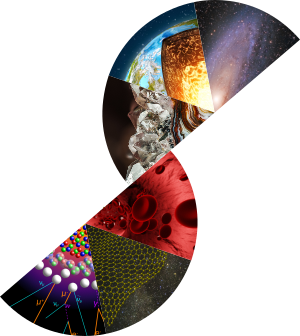Introduction
Most planetary bodies in the outer solar system are composed largely of water ice, which can behave like granular materials at their surface. These materials present a particle size distribution typically ranging between 10 and 100μm, and are subjects to potentially very high cohesion forces [1]. In the case of Saturn's moon Enceladus, jet activity resulting in the deposition of fine ice grains (∼10-100µm) at low temperature (∼60-80K) suggest the formation of relatively stable powdery deposits [2]. Analogous processes could also be active on Europa [3]. Characterizing the properties of these ice powders is essential for understanding the evolution of surface morphologies and anticipating the technical problems that future missions may encounter during landing and/or sampling of surface materials.
This study aims at characterizing the mechanical behavior of micrometric ice powders, on a wide range of temperatures, from Martian to Saturn's moon conditions. The main goal is to quantify the evolution of internal parameters controlling the mechanical properties of ice powder, such as grain cohesion, with temperature, through a rotating drum experiment.
Methods
We developed a method to produce icy regolith analogue powders, we use a spray nozzle to create a fog consisting of water droplets, frozen in a liquid nitrogen bath (~77K), producing spherical grains with a size of a few dozens to hundreds of micrometers.
We use a liquid-nitrogen cooled rotating drum to perform dynamical measurements. The goal is to quantify the cohesion by analyzing the angle and irregularities of the flowing surface [4] on a wide range of temperatures (~80-250K). The more cohesive a powder is, the higher is the angle of the surface inside the drum, and the more irregular this surface is. From images of the powder in rotation inside the drum, we deduce a mean angle, and calculate a standard deviation around this angle, corresponding to a first level of irregularities.
Results
The first measurements performed with the rotating drum show an increase of the mean angle of the flowing surface, as well as an increase of the standard deviation around this angle, within the temperature range of 90 to 150K. This suggests that the cohesion significantly increases with temperature over this range, a surprising result on first look, but in agreement with other studies conducted at higher temperatures (>170K) [5]. Similar experiments need to be performed on more exotic powders, including salt-ice mixtures relevant for Europa and organic-ice mixtures relevant for Titan.
To better constrain complementary properties of the powder, we are also developing other experimental setups, such as a cold cell for a powder rheometer to perform shear tests on ice powders.
References
[1] B. Andreotti et al. (2013) Granular Media: Between Fluid and Solid. Camb. Univ. Press.
[2] M. Choukroun et al. (2020) Geophys. Res. Letters, 47(15).
[3] W. B. Sparks et al. (2017) ApJ, 839:L18.
[4] G. Lumay et al. (2012) Powder Tech., 224:19–27.
[5] G. Musiolik and G. Wurm (2019) ApJ, 873:58.

 PDF version
PDF version
